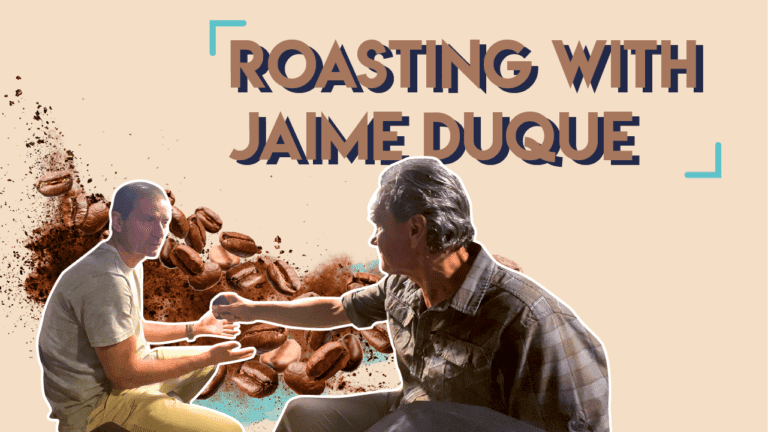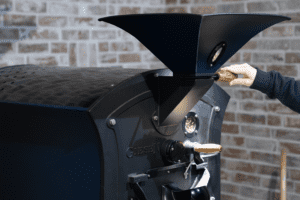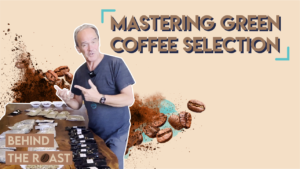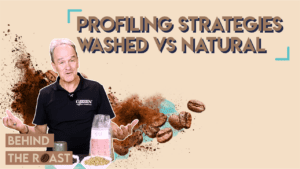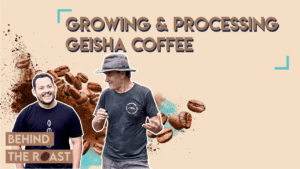Welcome to ‘Roasting dialogues with Jaime Duque’. In this episode Willem talks/roasts with Jaime special coffee. We are so excited to share our enthusiasm about the great profession and craft of roasting coffee. We hope you love it as much as we do. Last month Willem talked about the roasting decaf coffee. Missed that one? Click here. Enjoy the fourth episode of ‘Behind the Roast’ with Willem Boot! With downloads and an article about fermentation techniques.
Cupping sheet
Below you can download the filled-out cupping sheet for both roasts. Next to this, you can download an empty cupping sheet.
The Tasty World Of Special Fermentation Techniques
In 2015, Australian barista and coffee roaster Sasa Cestic won the World Barista Championships with a memorable presentation featuring a coffee produced with a special fermentation process called “Carbonic Maceration”. His victory had a huge impact. He inspired countless coffee producers around the world to experiment with fermentation protocols to improve the flavor of their coffee. The carbonic maceration process, which was officially introduced in 2015, is just one example of the numerous processes coffee producers are experimenting with today. The fact that we now live in different times as far as coffee is concerned is apparent not only from the changing taste preferences but also from the new language used to describe the taste profile of coffee.
Today, special fermented coffees are the new trend in the world of specialty coffee. Traditionally, the taste of over-fermented coffee has been considered a serious taste defect and can ruin the quality of the coffee and significantly damage the reputation of the producer.
Aerobic fermentation
Broadly speaking, fermentation can be done in two ways. Aerobic (with oxygen) or anaerobic (without oxygen). During aerobic fermentation, freshly picked coffee cherries or freshly de-pulped coffee beans are poured into a container, after which the micro-organisms do their job. As a producer, you mainly keep an eye on the time and at least every hour you inspect the consistency and possibly the smell of the coffee. Ultimately, environmental factors such as temperature and relative humidity determine the rate of fermentation. The smell can be a good indication of the build-up of too much acetic acid, which can eventually give the coffee a bad taste.
Anaerobic fermentation
For the anaerobic fermentation, the berries or beans are poured into a tank of water. Due to the absence of oxygen, the fermentation proceeds much more slowly; after all, oxygen is an important fuel for the bacteria present. The coffee producer can follow the anaerobic process relatively easily by measuring various values, such as the sugar content of the berries and the temperature and acidity (ph value) of the water. The anaerobic processes are usually more homogeneous in terms of result and flavor profile. One popular example of anaerobic fermentation is the use of carbon dioxide maceration, in which the tank is filled with carbon dioxide. This fermentation technique is preferably carried out with specially designed stainless steel containers that must also be able to be rotated regularly and where the relevant process parameters can be continuously measured. If successful, carbonation maceration can give the coffee a fruity, winey aftertaste. Typically, this process requires a higher investment for the coffee farmer, as well as more specialization and relevant expertise.
Fermentation other products
Finally, there is also the fermentation technique in which other products are added in addition to the coffee. Think of fruits such as mandarin, passion fruit, or pineapple. Or by adding cinnamon, citric acid, or even essential oils. These adulterations of coffee fermentation are viewed with suspicion by many because of the quality risks and also from product-ethical, purist objections.
As in the fermentation of other products, yeasts play a cardinal role. A common natural yeast is “Sacromises Cerevisiae”, a wild yeast that is also used for fermenting wine grapes, cocoa beans, and also coffee. The coffee producer may also choose to add other baker’s or brewer’s yeasts. Ultimately, special yeasts influence the final taste of the coffee. Also, during the fermentation, the help of special bacteria, “Lactobacillus”, can be called in, which influences the fermentation of coffee by the formation of lactic acid, which can promote the sweetness of the coffee.
Roasting special process coffees
The difficulty of roasting special process coffees is caused to a major degree by the fact that the cellular constitution of green coffee beans can radically be altered as a result of the prolonged fermentation process. The composition and the rigidity of the cell walls are altered significantly while the fermentation goes on. On top of that, we should also take into account the fact that special fermentation processes can significantly alter the composition of sugars inside the cellular structure and on the exterior layers of the beans. During the roasting process, the composition of the cell walls dictates how water vapors and gaseous compounds can migrate throughout the bean which also changes the outcome of the Maillard reactions that occur during the roasting process. In light of this phenomenon, I’ve also noticed that the first crack tends to be remarkably quiet and that the color changes during roasting evolve differently. I can conclude that prolonged and controlled fermentation protocols of coffee cherries and parchment coffee beans are game changers; from the roasting process of the green beans to the preparation of the roasted coffee to the appreciation and interpretation of the quality of the final brew.
In my experience, the technology of Giesen coffee roasting machines offers unique opportunities to control the roasting process of special process coffee thanks to the controllability of air pressure and the accuracy with which the heat supply can be regulated.
Willem Boot
Willem Boot is Brand Ambassador of Giesen Coffee Roasters and founder of Boot Coffee Campus, a leading coffee training institute for the coffee industry. Check the program of specialized courses at www.bootcoffee.com.

